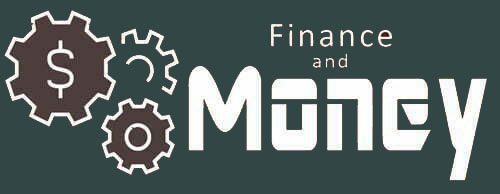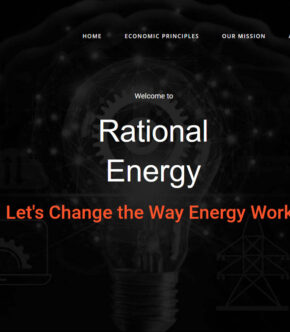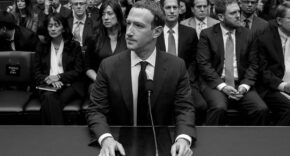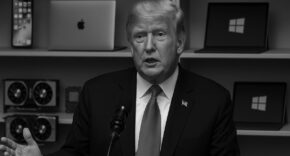President Donald Trump’s second-term foreign policy is centered on an aggressive new trade doctrine, using sweeping tariffs to reset America’s global economic position. But buried within this broader tariff strategy is a secondary, highly strategic goal: securing access to critical minerals around the world. These minerals — essential for defense systems, electronics, and clean energy technologies — are now a key part of Trump’s plan to reduce reliance on foreign supply chains. As his administration imposes tariffs on imports from both allies and adversaries, Trump is simultaneously demanding mineral access as a condition for trade relief, military aid, or diplomatic support. The aim is not only to punish trade imbalances, but also to build up America’s reserves of rare earths and other strategic resources that power everything from fighter jets to electric cars.
Critical minerals such as lithium, cobalt, copper, and rare earth elements are now viewed as key to both economic and military strength. They are used in electric vehicle batteries, smartphones, solar panels, missiles, jet engines, and night-vision equipment. As Trump pushes forward with a global 10 percent tariff on all imports and even higher duties on certain countries, he is simultaneously offering rare incentives — and making high-stakes demands — centered on the minerals beneath the earth’s surface.
Tariffs to Pressure, Minerals to Reward
Trump’s foreign policy operates through a sharp mix of punishment and reward. Countries that face high tariffs are being given an option: open up your mineral reserves to American companies, and the United States might ease the pressure.
This approach is forcing allies and rivals alike to reconsider their positions. In Ukraine, the Trump administration has repeatedly tied U.S. military and financial support to access to rare earth elements. President Volodymyr Zelensky reminded Trump of Ukraine’s valuable lithium and uranium reserves, saying a Russian victory would place those resources under Vladimir Putin’s control. Trump responded by asking for up to “half of Ukraine’s minerals” as compensation for American aid.
The latest proposals go beyond just mining rights. A March draft plan would allow U.S. firms to profit from Ukrainian metal, oil, gas, and infrastructure projects. When Zelensky’s team delayed approval, Trump said publicly, “I see he’s trying to back out of the rare-earth deal. And if he does that, he’s got some problems. Big, big problems.”
A Global Tariff Shock
Trump’s tariff policy is shaking up global trade. On April 2, his administration imposed a 10 percent baseline tariff on all imports, with even steeper rates targeting countries like Canada, Australia, China, and Brazil — many of which supply critical minerals. China responded by limiting exports of minerals like tungsten and molybdenum, further tightening global supply chains. Meanwhile, U.S. companies are scrambling to secure new sources.
Trump’s mineral demands are clearly linked to this tariff strategy. If a country wants to avoid punitive tariffs or win favorable trade terms, it must bring its mineral resources to the table. The Democratic Republic of Congo, for instance, has offered access to cobalt, lithium, and uranium in exchange for U.S. help in ending the conflict with M23 rebels.
Massad Boulos, Trump’s senior adviser for African affairs, said after meeting with Congo’s president, “The president and I have agreed on a path forward for [a mineral deal’s] development.” He emphasized that American companies will bring “multi-billion-dollar investments” to the region. Congo, currently under heavy Chinese influence in the mining sector, hopes that U.S. involvement could break China’s grip.
Australia, Canada, and the Cost of Refusal
Allies like Australia and Canada are feeling the weight of Trump’s combined tariff and mineral policy. Australia offered a guaranteed supply of minerals in return for tariff exemptions on steel and aluminum — an offer that Trump rejected. Resources Minister Madeleine King said she was “sad” the U.S. did not accept, and made clear that Australia would now seek mineral partnerships with countries like Japan and Germany instead.
Canada has been hit with a 25 percent tariff on exports, including copper. In response, British Columbia is racing to approve new mining projects and secure alternative buyers. However, the environmental risks and lack of Indigenous consultation are raising concerns.
Kevin Rudd, Canada’s ambassador to the U.S., noted that his country had sent three sets of ministers and two prime ministers to try to negotiate exemptions, but had gotten nowhere. “We’re up against an administration with a deep-seated view that tariffs are the way of the future,” he said.
Greenland and the Arctic Front
Trump’s interest in Greenland is another example of how he uses minerals in conjunction with trade pressure. He continues to press for U.S. control over the territory, citing its untapped mineral wealth and strategic location. When Vice President JD Vance visited Greenland in March, local leaders called the visit “highly aggressive.” Still, Danish officials have expressed openness to U.S. mining contracts and more military bases — possibly to avoid deeper confrontation.
“We need Greenland,” Trump told NBC News. In his view, controlling Arctic mineral resources is as important as any traditional military alliance or trade deal.
Critics Warn of Instability
Supporters of Trump’s strategy say it is necessary to protect national interests and challenge China’s near-monopoly on critical mineral processing. National Security Council spokesman Brian Hughes said, “Prioritizing critical minerals in our foreign policy not only helps power the American economy but also eliminates dependency on global competitors such as China.”
But many critics say the tariffs are creating chaos in global markets while failing to produce real supply chain security. Jennifer Toy and Sydney Fultz-Waters, writing on mineral policy, warned that domestic mines take nearly two decades to reach full production. “It’s unlikely that these current tariffs will be successful in shifting supply chains to U.S. soil,” they concluded.
Others point out that the threat of tariffs is damaging relationships with key allies. In Australia, Nationals MP Kevin Hogan said the country had more leverage now than before, but others disagreed. Labor leader Jason Clare said, “This is like poking one of your best mates in the eye.”
Trump’s dual strategy of using tariffs to punish and minerals to entice is bold, but also risky. It has created opportunities for U.S. companies to secure valuable resources and reduce dependence on China. But it is also alienating allies, driving up global prices, and increasing geopolitical tensions.
In places like the Congo and Greenland, the U.S. may gain new access to minerals. In places like Canada and Australia, it may lose trust that has taken generations to build.











